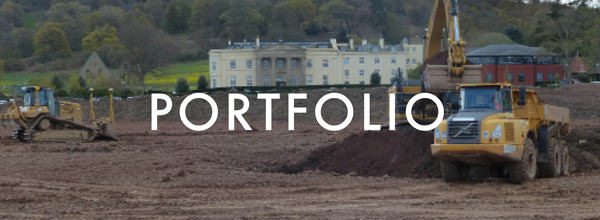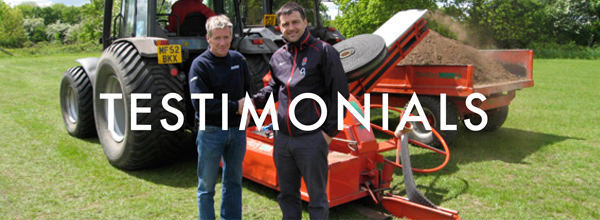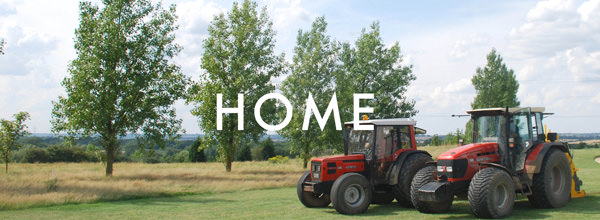PORTFOLIO - SPORTS PITCH DESIGN & CONSTRUCTION - Kingley Gate Littlehampton
Kingley Gate Littlehampton
Sports Pitch Design & Construction
With the firm’s already sterling reputation for its sports pitch design and construction projects being bolstered through the award of the runner-up up prize in the previous year’s IOG (now GMA) ‘Contractor of the Year’ awards category, Turfdry was engaged by Barratt David Wilson Homes to deliver new natural turf sports facilities for its Kingley Gate Development in Littlehampton, Sussex.
Construction of the new housing development had been ongoing for the previous five years, and with work on the housing estate drawing to a close, Barratt David Wilson Homes were keen to expedite the proposed sports pitch construction as much as possible, as to finalise the project as a whole in a timely and coordinated fashion. To this end, they contacted Turfdry to draw on the firm’s extensive experience in designing and constructing carefully considered sports facilities - on time and within budget.
Although an initial design for the pitches and sports plateau had been developed, Barratt were keen to take on board Turfdry’s input to take advantage of any value-engineering opportunities, and to ensure that the quality of the final facilities was as high as possible within the budget. Consequently, Turfdry proposed a re-designed plateau, with revised levels that would assist in more effective surface water drainage, and relocated pitches to ensure the future sporting activities would prove minimally disruptive for the new residents of the estate.
As with all of Turfdry's pitch construction projects, the new design was facilitated by state-of-the-art GPS survey technology, which allows for the generation of a computerised 3D model of the existing site; this model is then used to produce a ‘cut & fill’ design for the pitch plateau, taking into account the quality of the existing material on-site. In the instance of the Kingley Gate site, the mixed use of the sports plateau area throughout the previous years of construction had left it with a fairly significant deficit of topsoil, so it was calculated that the existing material would need to be supplemented with high quality, imported topsoil. In order to balance the quality of the final facilities against their construction costs, the final design specified different topsoil depths for different areas of the site, with the pitches having a greater depth of topsoil than the plateau surrounds, with the final total of additional topsoil required coming to around 5,000 cubic metres.
The logistics of importing this volume of material onto what an active and busy construction site presented a challenge to Turfdry, as well as the various other stakeholders in the project, requiring careful planning and coordination to prevent both delays for the pitch's construction, and disruption of the broader construction activities on the estate. Thanks to detailed practical analysis of these logistics however - bolstered by a pro-active spirit of cooperation between all parties - the topsoil was successfully imported over a period of three weeks as the earthworks phase began with the construction of the subsoil layer.
An additional challenge on this project was provided by the elements, with heavy rain leading to considerable waterlogging, which slowed progress of the initial earthworks. This was compounded by the discovery of significant sections of the site that were made of material inappropriate for pitch construction - primarily a consequence of damp or otherwise inappropriate material having been dumped on the pitch site throughout the estate's construction, which had resulted in wet, spongy patches of the site that could not attain the requisite levels of compaction to provide a high quality sports surface. To overcome this issue, the problematic material required excavation and replacement with dry, higher quality soil that could meet the compaction requirements for a high quality sports facility.
A further consequence of the site's previous use as a storage and dumping area during the majority of the estate's construction phase was that particular care had to be taken during the installation of the drainage system, to ensure that no buried detritus interfered with its efficacy. To this end, the proposed drainage system was marked out using GPS, and the areas where drains were to be installed were interrogated with an excavator to allow for the removal of any debris or building material before being backfilled with clean soil before the drainage installation began.
The drainage system itself uses a single tier of Turfdry's Hydraway Sportsdrain laterals - a unique alternative to conventional plastic pipe drainage systems that provides optimal drainage performance, whilst requiring considerably less maintenance than a traditional two-tier drainage system. These lateral drains connected to a large-diameter plastic pipe carrier drain, with the collected water outfalling into the broader rainwater sewage system of the broader housing development. Thanks to its unique construction, Hydraway is installed in 55-65mm wide trenches, which are backfilled with layers of gravel and sand.
Subsequent to the drainage installation, cultivation and seeding works took place across the site, providing the pitches and their surrounds with a quality finish and the beginnings of a healthy new grass sward.
Although a pitch's construction lays the most fundamental foundation of its quality, the careful, rigorous maintenance required to establish a healthy, durable swards should not be overlooked. Whilst some of our clients opt to manage this themselves, the majority - as in this instance - entrust this process to Turfdry's nationally recognised expertise in the field.
Crucial to successful sward establishment is a sensitivity to the elements. Unlike the majority of construction projects, natural turf construction must work hand-in-hand with the seasons, and the ever-changing weather, to ensure delivery of the highest possible quality sports surface.
With Turfdry taking charge of establishment and maintenance, our clients are assured of optimal facilities at handover, ensuring cost-effective projects that deliver optimal results for all stakeholders, from top-level clients to end-users. This ambition certainly rung true on this project, with visits from Arun Council - who were to take ownership of the pitches - proving most complimentary, where council representatives noting that Turfdry's pitches were of a significantly higher quality than any others that have been delivered in recent years.
Following this initial project, Turfdry's pitch design & construction services have been called upon again by Barratt Homes, who engaged the firm to deliver a similar project at Salesian School, Chertsey.
Project Summary |
Services Provided by Turfdry
AddressKingley Gate |


























